One way to improve your golf game is to learn some putting tips for golf. Putting is the final and most important part of golf, as it can determine the outcome of your round. Whether you are a beginner or a pro, you need to practice and perfect your putting skills.
This guide will show you how to putt with confidence and accuracy, and how to save strokes on the green. You will learn about the fundamentals of putting, such as stroke, alignment, distance control, and green reading.
You will also discover some useful techniques and strategies to help you putt better and lower your scores.
The Fundamentals of Putting
Before diving into specific tips, it’s crucial to understand the basic fundamentals of putting. A solid foundation is essential for any skill in golf, and putting is no exception.
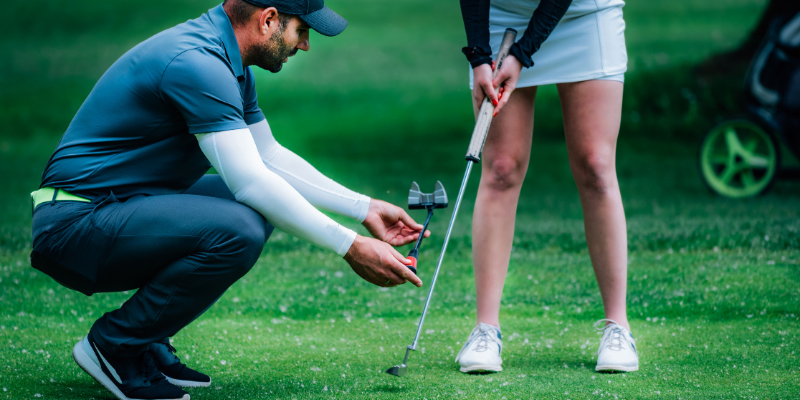
- Grip and Stance: A proper grip and stance are fundamental to successful putting. Place your hands on the grip so that your palms face each other. Keep your forearms parallel, forming a “V” shape with your thumbs and forefingers. Your stance should be shoulder-width apart with your feet pointing slightly outward.
Ensure your eyes are directly over the ball to maintain proper alignment. - Ball Position: The position of the golf ball in your stance is critical. For a standard putt, place the ball slightly forward of the center of your stance.
This setup promotes a smooth, consistent stroke and helps you strike the ball with a slight upward angle. - Putter Choice: Choosing the right putter is a personal preference, but it’s essential to select one that feels comfortable and suits your eye.
Putters come in various designs and styles, so experiment until you find one that enhances your confidence and consistency.
Golf Putting Advice: Stroke Techniques
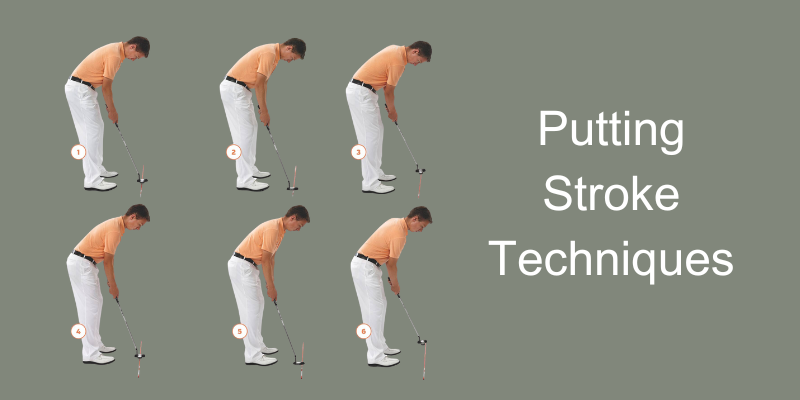
- Smooth and Rhythmical Stroke: A smooth and rhythmical putting stroke is key to controlling the distance and direction of your putts. To develop this, practice maintaining a consistent tempo throughout your stroke. Try to avoid jerky or rushed movements that can disrupt your accuracy.
- Use Your Shoulders, Not Your Hands: When putting, focus on moving your shoulders rather than your hands. Minimizing hand movement leads to a more stable and consistent stroke.
Let your arms and hands remain passive as you rock your shoulders back and forth. - Aim and Alignment: Correct alignment is crucial for making putts consistently. Use a trusted intermediate target (a spot in front of your ball) and align your putter’s face with it.
Additionally, ensure that your feet, hips, and shoulders are all aligned parallel to your target line.
Reading the Greens
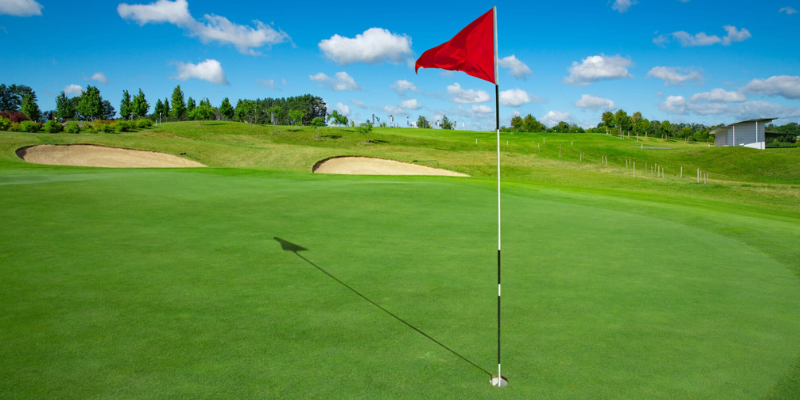
- Study the Slope: Before you putt, take a moment to read the greens. Look for subtle slopes, grains, and contours that might influence the ball’s path. Identifying the high and low points on the green is essential for successful putts.
- Use Your Feet: To get a better feel for the green’s slopes, use your feet. Walk around the putt’s line to assess the terrain. Feeling the slopes under your feet can provide valuable insights into how the ball will break.
Distance Control
- Practice Lag Putting: Lag putting is all about controlling your putts’ speed and distance. To become a proficient lag putter, focus on rolling the ball to a comfortable distance from the hole. This reduces the risk of three-putts and puts less pressure on your short putting game.
- Consistency is Key: Developing a consistent putting stroke is crucial for distance control. Practice putting from various distances to get a feel for the required speed. With time, you’ll become more accurate at judging how hard to hit the ball for different lengths of putts.
Mental Aspects of Putting
- Stay Calm and Focused: Mental composure is vital in putting. Before you take your putt, clear your mind of distractions and focus on the task at hand. Take a few deep breaths to calm your nerves and visualize a successful putt.
- Develop a Routine: Establishing a consistent pre-putt routine can help calm your nerves and instill confidence. A reliable routine can include practice swings, a specific way of addressing the ball, and taking the time to read the green thoroughly.
Practice, Practice, Practice
- Regular Putting Drills: Like any other skill in golf, improve putting with practice. Incorporate putting drills into your routine to enhance your abilities. Drills like the “gate drill” and “circle drill” can help you develop accuracy and consistency.
- Simulate Pressure Situations: To handle the pressure of important putts on the course, create pressure situations during practice. Challenge yourself to make a certain number of putts in a row or simulate the pressure of a “must-make” putt.
⛳ What is the most crucial putting tip for beginners?
The most crucial tip for beginners is to work on their alignment. Ensure your feet, hips, and shoulders are parallel to the target line.
⛳ How can I maintain a consistent putting stroke tempo?
Practice with a metronome to develop a rhythmic stroke and maintain a consistent tempo, one of the best putting tips in golf.
⛳ Should I keep my head still during a putt?
While it’s essential to minimize head movement, it’s okay for your head to move slightly as long as you maintain focus on the ball, following some good putting tips.
⛳ What's the best way to practice lag putting?
Practice lag putting by working on distance control. Try to roll the ball to a specific distance without worrying about the hole; it’s one of the great putting tips to improve your putting game.
⛳ Can changing my grip improve my putting game?
It’s possible. Experiment with different grip styles to find one that feels comfortable and provides greater control, which is a form of golf putt tips.
Adapting to Different Conditions
- Adjust for Speed: The speed of the greens can vary from course to course and even throughout the day. Adapt your putting stroke and speed control based on the greens’ conditions. Faster greens require a softer touch, while slower greens may demand a more assertive stroke.
- Consider Wind and Weather: Wind and weather conditions can affect your putting. In the presence of substantial wind in golf, adopt a more conservative strategy when playing your putts, as gusts have the potential to significantly influence the ball’s path.
Golf gaming in the rain can also slow down greens, so adjust your putting stroke accordingly.
Putting Aids and Training Tools
Improving your putting game doesn’t always require spending hours on the green. Many golfers find significant benefits in using putting aids and training tools to fine-tune their skills.
These aids and tools can provide instant feedback, help identify weaknesses in your putting stroke, and enhance your overall performance.
Here are some popular putting aids and training tools:
- Putting Mat: A putting mat is a portable and convenient tool that allows you to practice your putting stroke at home or in your office. Some mats come with alignment guides and various putting zones, enabling you to work on different types of putts, from short ones to long lag putts.
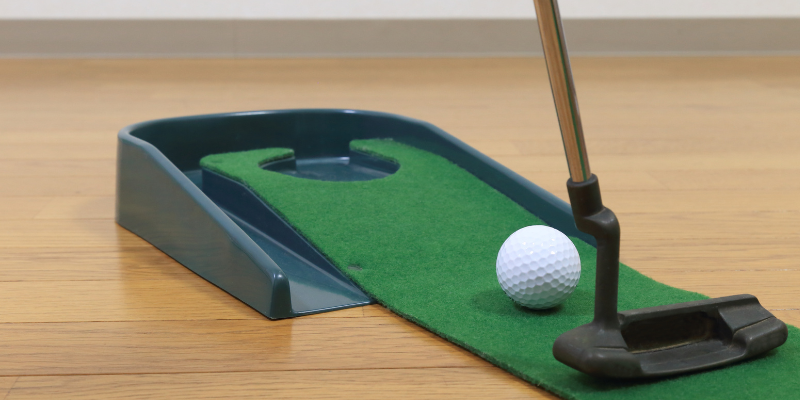
- Alignment Sticks: Alignment sticks are versatile training aids. By placing them on the ground parallel to your target line, you can ensure proper alignment and consistency in your setup.
- Putting Mirror: A putting mirror is a training aid that offers instant feedback on your stance, eye position, and putter alignment. It’s a valuable tool for honing your fundamentals.
- Putting Laser Aids: Some laser devices project a line onto the green, helping you visualize the ideal putting line and improve your alignment and aim.
- Putter Training Aids: Various putter training aids are designed to refine your putting stroke. These aids can help you develop a smooth, pendulum-like motion, which is essential for putting accuracy.
- Putting Software and Apps: There are several smartphone apps and software programs that provide putting analysis and drills. They often use sensors and cameras to analyze your putting stroke and offer feedback and tips for improvement.
- Pressure Putt Practice Cups: These smaller cups or reduced-size holes force you to be more accurate with your putts. Using these cups can enhance your precision when putting to a regulation-sized hole.
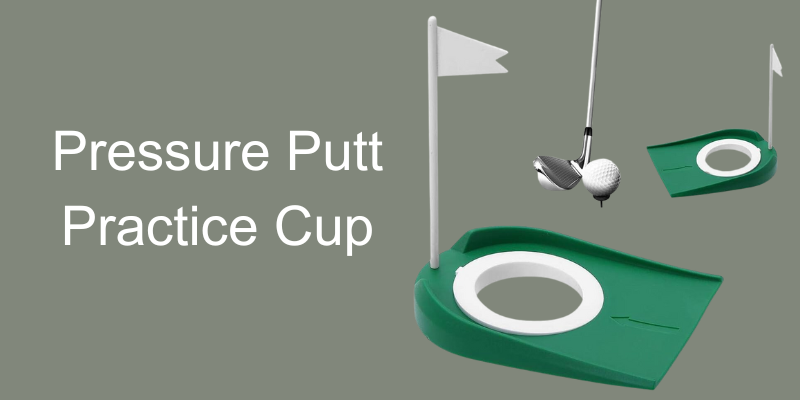
When using putting aids and training tools, it’s important to use them in conjunction with proper instruction and practice. They can help you identify weaknesses in your putting game and provide specific areas to work on.
However, always aim to replicate the same stroke and skills on the actual putting green to translate your training into improved performance on the course.
By incorporating putting aids and training tools into your practice routine, you can target specific aspects of your putting that need improvement and develop a more reliable and accurate putting game.
Conclusion
One of the best putting tips for golf is to always finish your round with a positive mindset.
Mastering the art of putting in golf is a never-ending journey. From the fundamentals of grip, stance, and alignment to refining your stroke technique and honing your mental game, there are countless aspects to consider.
Remember, putting is often where golfers win or lose their games, so investing time and effort into your putting skills is well worth it.
By implementing the golf putting tips discussed in this article, you can make significant improvements in your putting game. Regular practice, proper technique, and maintaining a calm mindset are the keys to becoming a more confident and accurate putter.
So, the next time you step onto the greens, remember these tips, and watch your scores steadily improve as you sink those crucial putts.